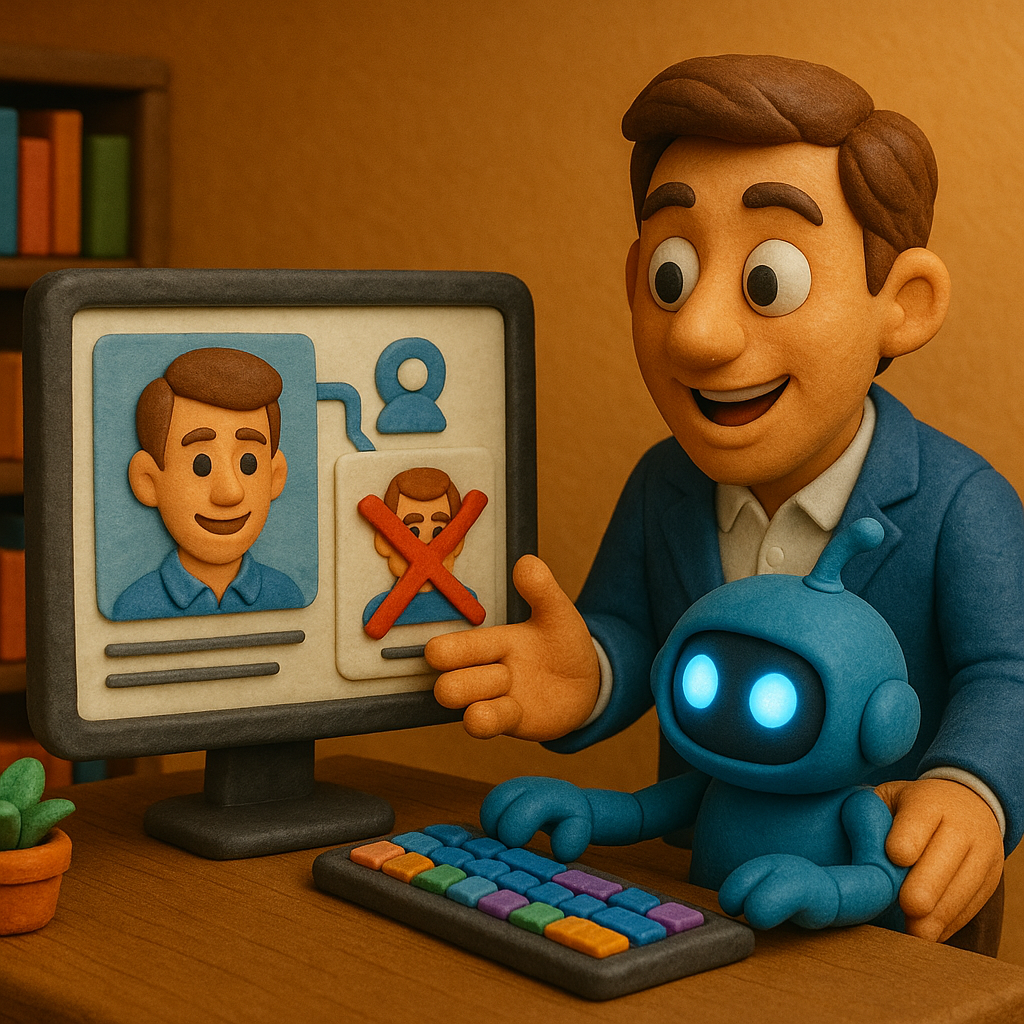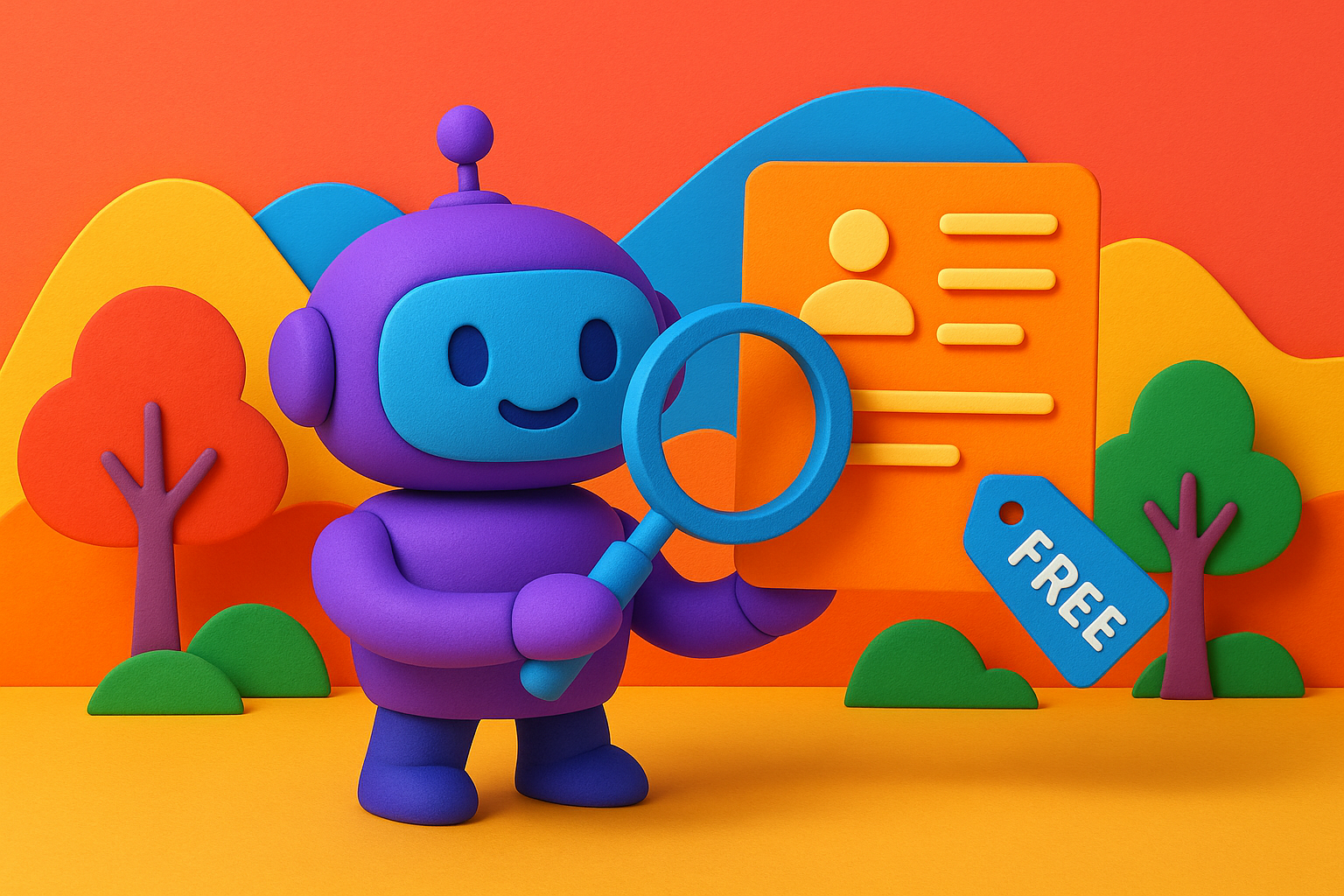
Agency vs. In-House Recruiting: True Cost Comparison 2025
What do recruitment agencies actually cost in 2025?
Let's start with the hard numbers. Recruitment agency fees in 2025 typically range from 15-30% of the hired candidate's first-year salary. But here's where it gets interesting—the percentage varies wildly based on:
By Fee Type:
- Contingency fees: 15-25% of annual salary (you only pay if they place someone)
- Retainer fees: 20-35% of first-year salary (you pay upfront whether they place someone or not)
- Executive search: Up to 50% of base salary for C-level roles
- Contract staffing: 40-45% markup over hourly rate
By Role Level:
- Entry-level/warehouse/manufacturing: 15-20% of salary
- Specialized professionals (accountants, engineers, IT, marketing managers): 20-25%
- Senior/executive roles: 25-35% (sometimes higher)
Real Dollar Examples:
- $40K warehouse worker: $6,000-8,000 agency fee
- $75K software engineer: $15,000-18,750 agency fee
- $100K marketing manager: $20,000-30,000 agency fee
- $200K VP of Sales: $50,000-70,000 agency fee
For a company making 50 hires per year at an average salary of $75K, you're looking at $750,000-1,125,000 in annual agency fees if you use agencies for all hires. That's... a lot of money.
What does an in-house recruiting team actually cost?
In-house recruiting has fixed costs instead of variable per-hire fees. Here's the breakdown:
Personnel Costs:
- Junior recruiter: $55,000-65,000 base salary + 20-30% benefits = $66,000-84,500 total
- Mid-level recruiter: $70,000-85,000 base + benefits = $84,000-110,500 total
- Senior recruiter: $85,000-110,000 base + benefits = $102,000-143,000 total
- Recruiting manager: $100,000-130,000 base + benefits = $120,000-169,000 total
Technology/Tools Costs:
- ATS (Applicant Tracking System): $5,000-50,000/year depending on size
- Job boards (Indeed, LinkedIn, etc.): $10,000-40,000/year
- Background checks: $30-100 per hire
- AI recruitment software (HR AGENT LABS): $15,000-45,000/year
- CRM/sourcing tools: $5,000-20,000/year
Other Costs:
- Recruiting coordinator: $45,000-60,000 total comp
- Employer branding/marketing: $10,000-50,000/year
- Career fairs and events: $5,000-20,000/year
- Employee referral bonuses: $500-2,000 per hire
Example: Small In-House Team (50 hires/year):
- 2 mid-level recruiters: $194,000
- ATS + job boards: $25,000
- AI recruitment software: $20,000
- Background checks (50 × $50): $2,500
- Referral bonuses (10 × $1,000): $10,000
- Total: $251,500 annually
- Cost-per-hire: $5,030
Compare that to $750,000 in agency fees for the same 50 hires. In-house saves $498,500 annually (66% reduction).
What are the hidden costs of agencies that nobody talks about?
The 15-30% fee is just the visible cost. Here are the hidden costs that make agencies even more expensive:
Hidden Cost #1: Replacement Guarantees (That Don't Actually Save You Money)
- Most agencies offer "90-day guarantee" if hire doesn't work out
- Sounds great, but you still wasted 3+ months of lost productivity
- You still paid onboarding and training costs
- Your team morale took a hit from the bad hire
- Real cost of a bad placement: $30,000-75,000 even with a "free" replacement
Hidden Cost #2: Lack of Institutional Knowledge
- Agencies don't know your company culture deeply
- They're incentivized to fill roles fast, not fill them right
- Result: 15-20% higher first-year turnover for agency hires vs. in-house hires
- Cost impact: $50,000-100,000 in additional turnover costs
Hidden Cost #3: Loss of Employer Brand Control
- Agency recruiters represent your company to candidates
- You have zero control over what they say
- Bad candidate experience reflects on YOUR brand, not theirs
- Cost impact: Hard to quantify, but damages long-term talent pipeline
Hidden Cost #4: "Bid Wars" and Inflated Salaries
- Agencies are incentivized to negotiate higher salaries (their fee is a percentage)
- They may present the same candidate to multiple companies, driving up offers
- Cost impact: 5-10% salary inflation vs. what you'd pay with in-house recruiting
Hidden Cost #5: The "Agency Dependency" Tax
- Once you rely on agencies, your internal recruiting muscles atrophy
- You lose the ability to recruit effectively without them
- They have pricing power over you because you need them
- Cost impact: You're stuck paying premium fees year after year
At what point does in-house recruiting become cheaper than agencies?
This is the million-dollar question. Here's the break-even analysis:
The Break-Even Formula:
Break-even point = In-house recruiting costs / Average agency fee per hire
Scenario 1: Small Company (Average $75K salary per hire)
- In-house recruiting costs: $251,500/year (2 recruiters + tools)
- Average agency fee: $15,000 per hire (20% of $75K)
- Break-even: 17 hires per year
If you're making 17+ hires per year, in-house is cheaper.
Scenario 2: Mid-Size Company (Average $90K salary per hire)
- In-house recruiting costs: $450,000/year (4 recruiters + manager + tools)
- Average agency fee: $18,000 per hire (20% of $90K)
- Break-even: 25 hires per year
If you're making 25+ hires per year, in-house is cheaper.
Scenario 3: Enterprise Company (Average $100K salary per hire)
- In-house recruiting costs: $850,000/year (8 recruiters + 2 managers + tools)
- Average agency fee: $20,000 per hire (20% of $100K)
- Break-even: 43 hires per year
If you're making 43+ hires per year, in-house is cheaper.
The Quick Rule of Thumb:
If you're hiring more than 15-20 people per year, you should seriously consider building an in-house recruiting team powered by AI recruitment software.
How does AI change the agency vs. in-house equation?
Here's where things get really interesting. AI recruitment software completely changes the math because it makes in-house teams 2-3x more productive.
Before AI:
- Average recruiter handles 40-50 hires per year
- Spends 60% of time on manual resume screening
- Limited bandwidth for candidate relationship building
- Can only handle 2-3 open roles simultaneously
After AI (with HR AGENT LABS):
- Average recruiter handles 80-120 hires per year (2-3x increase)
- Spends only 15% of time on resume screening (AI does it)
- Can focus on candidate experience and quality
- Can handle 5-8 open roles simultaneously
What This Means for Break-Even:
With AI, you need fewer recruiters to hit the same hiring volume, which means your break-even point drops:
- Old break-even: 17 hires/year with 2 recruiters
- New break-even with AI: 12 hires/year with 1 recruiter + AI
Real Example: 100 Hires Per Year
Option 1: All Agencies
- 100 hires × $18,000 avg fee = $1,800,000
Option 2: Traditional In-House Team (No AI)
- 3 recruiters + tools = $350,000
- Savings vs. agencies: $1,450,000
Option 3: AI-Powered In-House Team
- 2 recruiters + AI recruitment software = $240,000
- Savings vs. agencies: $1,560,000
- Savings vs. traditional in-house: $110,000
AI-powered in-house recruiting is cheaper than both agencies AND traditional in-house recruiting.
When should you actually use agencies instead of in-house?
I'm not here to tell you agencies are always bad. There are specific scenarios where agencies make total sense:
Scenario 1: You Hire Fewer Than 10 People Per Year
- In-house recruiting fixed costs don't justify the investment
- Better to pay $100,000-150,000 in total agency fees than $200,000+ for a full-time recruiter you don't fully utilize
Scenario 2: You're Hiring for Ultra-Niche Roles
- Quantum computing engineers, specialized surgeons, nuclear regulatory experts
- Agencies with deep networks in these niches are worth the premium
- Your in-house team doesn't have the specialized sourcing relationships
Scenario 3: You Have an Urgent, One-Time Hiring Spike
- Just landed a big contract and need to hire 20 people in 60 days
- Your 2-person recruiting team can't handle it
- Agencies can flex capacity immediately without you hiring/firing recruiters
Scenario 4: You're Opening a New Market Where You Have Zero Brand
- Expanding to a new country/city where nobody knows your company
- Agencies have existing relationships with local talent
- Use them to make initial hires, then build in-house presence
Scenario 5: Executive/C-Level Roles
- For CEO, CFO, CTO roles, executive search firms are often worth it
- They provide market intelligence, confidential searches, and negotiation expertise
- Even companies with strong in-house teams use agencies for C-suite
The Smart Hybrid Approach:
- 80% of roles: In-house team powered by AI recruitment software
- 15% of roles: Agencies for specialized/urgent needs
- 5% of roles: Executive search firms for C-level
This hybrid model gives you 70-80% cost savings vs. all-agency approach while maintaining flexibility.
What's the true cost comparison for 50, 100, and 200 hires per year?
Let's do side-by-side comparisons for different hiring volumes:
50 Hires Per Year (Average $75K Salary)
| Approach | Total Cost | Cost-Per-Hire |
|---|---|---|
| 100% Agencies (20% fees) | $750,000 | $15,000 |
| Traditional In-House (2 recruiters) | $251,500 | $5,030 |
| AI-Powered In-House (1 recruiter + AI) | $146,500 | $2,930 |
| Savings (AI vs. Agencies) | $603,500 (80%) | - |
100 Hires Per Year (Average $80K Salary)
| Approach | Total Cost | Cost-Per-Hire |
|---|---|---|
| 100% Agencies (20% fees) | $1,600,000 | $16,000 |
| Traditional In-House (3 recruiters) | $350,000 | $3,500 |
| AI-Powered In-House (2 recruiters + AI) | $238,000 | $2,380 |
| Savings (AI vs. Agencies) | $1,362,000 (85%) | - |
200 Hires Per Year (Average $85K Salary)
| Approach | Total Cost | Cost-Per-Hire |
|---|---|---|
| 100% Agencies (20% fees) | $3,400,000 | $17,000 |
| Traditional In-House (5 recruiters + manager) | $640,000 | $3,200 |
| AI-Powered In-House (3 recruiters + AI) | $356,000 | $1,780 |
| Savings (AI vs. Agencies) | $3,044,000 (90%) | - |
The pattern is clear: the more you hire, the more you save with AI-powered in-house recruiting.
How do I transition from agencies to in-house without disrupting hiring?
This is the tricky part. You can't just fire all your agencies overnight and hope your in-house team can handle it. Here's the smart transition plan:
Phase 1: Build the Foundation (Months 1-2)
- Week 1-2: Hire your first in-house recruiter if you don't have one already
- Week 3-4: Implement AI recruitment software like HR AGENT LABS
- Week 5-8: Have in-house recruiter + AI handle 20% of roles (easiest, highest-volume positions)
- Continue using agencies for remaining 80%
Phase 2: Prove It Works (Months 3-4)
- Measure results: time-to-hire, cost-per-hire, quality-of-hire for in-house vs. agency
- If in-house is performing well (it should be), expand to 40% of roles
- Use agencies for 60% of roles
- This is where you start seeing real cost savings
Phase 3: Scale Up In-House (Months 5-6)
- Hire second recruiter if needed (based on volume)
- Expand in-house to 70% of roles
- Reserve agencies for specialized/hard-to-fill roles only
- Build talent pipelines and employer brand
Phase 4: Optimize (Months 7-12)
- In-house handles 80-90% of roles
- Agencies used strategically for 10-20% (exec search, ultra-niche roles, emergency needs)
- Fine-tune your resume screening tools based on actual hire performance
- You're now saving 70-80% vs. your old all-agency approach
Key Success Factors:
- Don't go cold turkey: Gradual transition prevents hiring disruption
- Invest in AI from day one: This is what makes small in-house teams productive enough to replace agencies
- Track metrics religiously: Prove to leadership that in-house is working
- Maintain 1-2 agency relationships: For emergencies and specialized needs
What are the biggest mistakes companies make with this decision?
I've seen companies screw this up in predictable ways. Here's what to avoid:
Mistake #1: Building In-House Without AI (The 2020 Approach)
- They hire recruiters but give them no tools beyond a basic ATS
- Recruiters spend 60% of time manually screening resumes
- They burn out and quit within 18 months
- Fix: AI isn't optional in 2025—it's the only way in-house teams compete with agencies on speed
Mistake #2: Hiring Junior Recruiters to Save Money
- "We'll save money by hiring cheap recruiters!" (they think)
- Junior recruiters lack the sourcing skills to compete with agencies
- They end up filling easy roles but can't handle senior/specialized positions
- Fix: Hire at least one experienced recruiter who can mentor juniors
Mistake #3: Not Calculating True Cost-Per-Hire
- They compare agency fee ($20K) to recruiter salary ($85K) and think agencies are cheaper
- They forget the recruiter handles 50+ hires, not just one
- Fix: Always calculate cost-per-hire, not cost-per-recruiter
Mistake #4: Expecting Immediate Results
- They build an in-house team and expect agency-level speed from day one
- In-house teams need 3-6 months to build pipelines and get up to full productivity
- Fix: Plan for a 6-month ramp-up period with AI helping bridge the gap
Mistake #5: Going 100% In-House For All Roles
- They swing from 100% agencies to 100% in-house
- This doesn't work—some roles genuinely need agencies
- Fix: Use the 80/15/5 hybrid model (in-house/agencies/exec search)
Mistake #6: Not Investing in Employer Branding
- Agencies bring candidates to you—in-house teams need candidates to come to them
- Without employer brand investment, your in-house team struggles with sourcing
- Fix: Allocate 10-15% of recruiting budget to employer brand and talent community building
What's the bottom line? Which should I choose?
Here's my recommendation based on hiring volume:
If You Hire 0-10 People Per Year:
- Use agencies 100%
- In-house doesn't make financial sense yet
- Total spend: $100,000-200,000/year
If You Hire 10-25 People Per Year:
- Hybrid: 1 in-house recruiter + AI recruitment software + agencies for 30-40% of roles
- This is the transition zone
- Start building in-house capability while using agencies as safety net
- Total spend: $200,000-300,000/year (vs. $400,000-600,000 all-agency)
If You Hire 25-100 People Per Year:
- AI-powered in-house team handles 80%, agencies handle 20%
- 2-3 recruiters + HR AGENT LABS + selective agency use
- Total spend: $250,000-400,000/year (vs. $800,000-2,000,000 all-agency)
- Savings: $500,000-1,600,000 annually
If You Hire 100-500 People Per Year:
- AI-powered in-house team handles 85-90%, agencies for emergencies/exec search only
- 4-8 recruiters + manager + AI recruitment software
- Total spend: $500,000-900,000/year (vs. $3,000,000-8,000,000 all-agency)
- Savings: $2,500,000-7,100,000 annually
If You Hire 500+ People Per Year:
- Full in-house recruiting function with AI, minimal agency use
- 10-20 recruiters + recruiting ops team + AI recruitment software
- Total spend: $1,200,000-2,000,000/year (vs. $10,000,000-20,000,000 all-agency)
- Savings: $8,800,000-18,000,000 annually
The Universal Truth:
If you're making more than 15 hires per year, AI-powered in-house recruiting will save you massive amounts of money while giving you better control over candidate experience and quality.
Want to calculate your exact savings? Try HR AGENT LABS free cost comparison calculator or schedule a demo to see how AI changes the economics of in-house recruiting.
Related Conversations on HR AGENT LABS Forum
- 💬 Transitioning from Agencies to In-House – Real transition stories and timelines
- 💬 Agency Fee Negotiation Strategies – Getting better rates from agencies
- 💬 Hybrid Recruiting Models That Work – 80/20 in-house/agency splits
- 💬 In-House Team Productivity Benchmarks – Hires per recruiter metrics
Related Blog Posts
- How to Reduce Recruitment Costs by 60% with AI Screening – Cost reduction strategies
- How Hiring Tools Reduce Agency Reliance and Improve ROI – Reducing agency dependency
- Calculating ROI from AI Resume Screening: Step-by-Step Formula – ROI calculations
- Recruiter Productivity and ROI Optimization Systems: Complete Guide – Productivity metrics
Ready to experience the power of AI-driven recruitment? Try our free AI resume screening software and see how it can transform your hiring process.
Join thousands of recruiters using the best AI hiring tool to screen candidates 10x faster with 100% accuracy.
Related Articles
How Hiring Tools Reduce Agency Reliance and Improve ROI
Paying 15-30% of every hire's salary to recruitment agencies? Modern AI recruitment software cuts agency dependency by 5...
Which Hiring Tools Deliver the Highest ROI in 2025?
Not all recruiting tools are created equal when it comes to ROI. AI resume screening delivers 250-350% ROI in 3-6 months...
How to Reduce Recruitment Costs by 60% with AI Screening
Tired of watching your recruiting budget disappear into manual screening, agency fees, and inefficient processes? AI rec...
Calculating ROI from AI Resume Screening: Step-by-Step Formula
Before your CFO asks "what's the ROI?", let's do the math. AI recruitment software typically delivers 250-350% ROI, but ...
Recruiter Productivity and ROI Optimization Systems: Complete Guide
Are your recruiters drowning in admin work? AI recruitment software increases productivity by 60%, saves 3-5 hours daily...
Essential Metrics to Track When Using AI Resume Screening
Which metrics actually prove your AI resume screening is working? Track these 9 essential KPIs: time-to-hire (33% reduct...
From the forum
Popular Posts
Free AI Resume Screening Software That Actually Works
Best Free AI Resume Screening Software 2025
How AI-Powered Resume Screening Reduces Hiring Time by 90% While Maintaining Quality Candidates
How Free Resume Screening Software is Revolutionizing Small Business Hiring in 2025
Why Manual Resume Screening is Becoming Obsolete in 2025: The Complete Shift to Intelligent Hiring
Recent Posts

How Small Businesses Save $47K Annually with AI Resume Screening
November 24, 2025

Free AI Resume Screening: Does It Deliver Real ROI?
November 24, 2025

Agency vs. In-House Recruiting: True Cost Comparison 2025
November 23, 2025

Which Hiring Tools Deliver the Highest ROI in 2025?
November 23, 2025

Calculating ROI from AI Resume Screening: Step-by-Step Formula
November 22, 2025